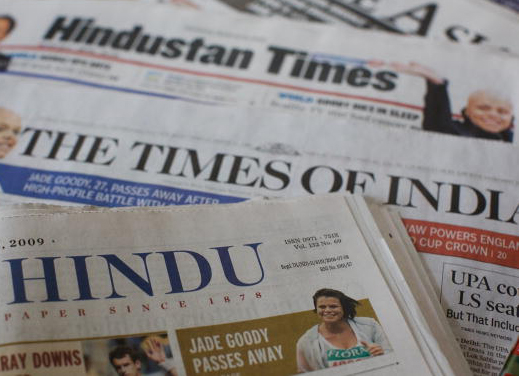
India’s FDI inflows up 1.5% to $2.18 billion in January
Foreign direct investment (FDI) into India grew by a meagre 1.5% to $2.18 billion in January, according to the data by the Department of Industrial Policy and Promotion. In January 2013, the FDI was at $2.15 billion. However, for the April-January period, foreign investment inflows dipped 2 per cent to $18.74 billion from $19.1 billion during the corresponding period of the previous fiscal, it said. During the 10-months of this fiscal, the highest FDI came in services ($1.80 billion), followed by pharmaceuticals ($1.26 billion), automobiles ($1billion) and construction development ($966 million). Mauritius led inflows into India with $4.11 billion of FDI during April-January, followed by Singapore ($3.67 billion), UK ($3.18 billion) and the Netherlands ($1.7billion).In December 2013, India received $1.1 billion of foreign inflows, unchanged from the level in the same month a year earlier. The country needs foreign investment to help regain its growth momentum. India’s economic growth slowed to a decade’s low of 4.5% in 2012-13. India is estimated to require about $1 trillion between 2012-13 and 2016-17, the 12th Five-Year Plan period, to fund infra projects. A decline in FDI would hurt the rupee, which depreciated to a record low of 68.85 against the US dollar on August 28 last year.
(Source: Financial Express)
Elections won’t kickstart investments: Credit Suisse report
Elections in India are unlikely to kick-start investment cycle in a short period of time as against popular perception that a new government led by BJP prime ministerial candidate Narendra Modi could immediately revive the markets and economy, says a Credit Suisse report. According to the global financial services major, there can be four scenarios post elections, Narendra Modi led NDA government with 2-3 allies; Narendra Modi led NDA government with 5-6 allies; other leader led NDA government with 8-10 allies or Third Front government supported by Congress. In case of other leader led NDA government, markets are expected to take negatively to ‘‘No-Modi’’ at the Centre and a potentially unstable government and in the Fourth case there would be ‘‘unwinding of the beta rally as apprehension of a rating downgrade emerges.’’ According to the global brokerage major, new government is not likely to revive investment in the power generation for two reasons: (1) overcapacity and lack of power distribution reform; and (2) slow growth in coal production. Going forward there can be three distinct phases in the market: (1) the run-up to the election results; (2) the 3 month period after elections; and (3) the period till the year-end.
(Source: Financial Express)
More banks importing gold can bring down prices: KC Chakrabarty
RBI Deputy Governor KC Chakrabarty defended the decision to allow more banks to import gold, saying presence of more players will lead to lower cost and help the country's external balances. "If there is competition, gold will be imported at a lower cost. Whatever gold will be imported that will be cheaper, to that extent CAD (current account deficit) will improve," he told reporters on the sidelines of an event here. In a move seen as a precursor to easing restrictions on inward shipments of the metal, RBI has allowed more banks, including Axis Bank, Kotak Mahindra, and IndusInd Bank among others from the private sector space, to import gold. The government and the RBI had imposed tough measures to control gold imports, one of the primary causes of the current account deficit swelling to a record high USD 88.2 billion in 2012-13. The government also increased customs duty on gold to 10 per cent from 4 per cent to discourage imports. According to sources, RBI has permitted Axis Bank, Kotak Mahindra Bank, IndusInd Bank and Yes Bank to import gold. These banks received permission to import gold under the 80:20 scheme from the RBI some time ago. Under the 80:20 scheme introduced on August 14, nominated agencies could import gold on condition that 20 per cent of the shipment would be exported and the remainder kept for domestic use. Permission for subsequent imports would be given on fulfilment of the export obligation. Due to the import restrictions, gold and silver imports declined 71.4 per cent to USD 1.63 billion in February. Imports of gold and silver in February 2013 stood at USD 5.24 billion. In January this year, they were USD 1.72 billion. Faced with intense pressure to relax gold import curbs, the government had said it would review the decision after getting final figures of CAD. Recent data releases showing a reduction in the CAD, driven mainly by the squeeze on the gold front, and also the reports on increase in smuggling, have led to murmurs of a drawback of the extraordinary measures.
(Source: Economic Times)
Economic Section
Royal Thai Embassy















